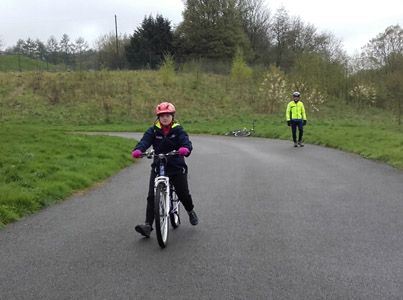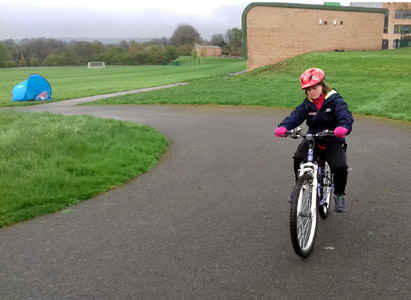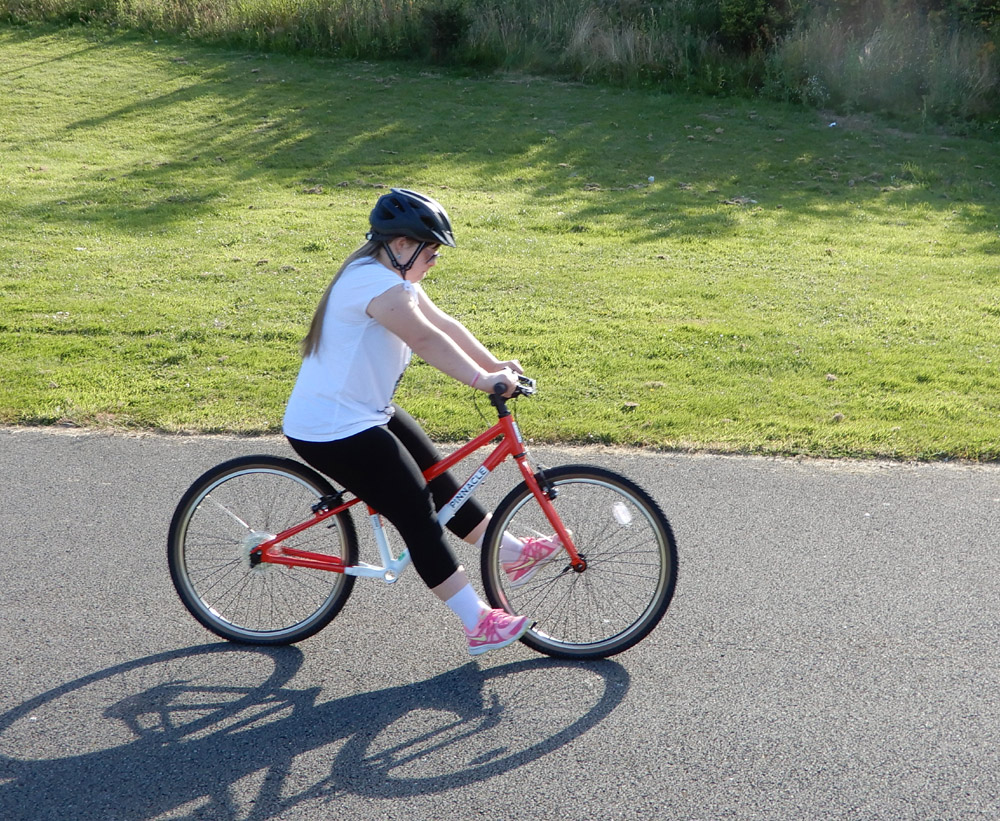Learning to Ride
People with Down's syndrome[1], autism and other developmental conditions[2] often have problems with proprioception: that sense of awareness of our body's position.
It can cause balance and coordination difficulties and make it especially difficult to ride a bike.
But they may be able to learn how to ride a trike and the practice pedaling builds up strength - apart from being great fun and building confidence.
Some may find that riding a trike is enough - and that's OK. But some learn later to
ride on two wheels initially using a balance bike. Most commercial balance bikes are aimed at tots, but its easy to take the pedals off a normal bike
(Top Tip: the left pedal has a left-hand thread!) and lower the saddle so that the rider can easily get her feet on the ground. Find some flat tarmac or a gentle slope.
Show the learner that the front brake can
buck the bike and threaten to throw the rider over the handlebars. Better to use the back brake to slow down. Get the rider to stand left side of the bike
and grab hold of the back brake lever (usually on the left)
to stabilise the bike as they mount up. Release the brake but keep the hand on the back brake lever ready to slow down. Then use both feet, preferably together,
to gain a little speed before
lifting them both off the ground to glide. Scoot, scoot, glide; scoot, scoot, glide.
Then it's about practice, perseverence and maybe success will follow.
We now realise that using stabilisers doesn't address the main problem : achieving balance and controlling it by steering -
that's why balance bikes are now considered key for teaching people how to ride;
see e.g.: Learn to ride a bike 5 steps
and Learn to ride a bike as an adult .
See also our daughter's own story here , which was first published ine Down's Syndome Association Magazine No142 Spring/Summer 2021.
 |
| No pedals, scoot, scoot. |
 |
| Lift those feet up, glide, and keep on trying! |
 |
| Keep the feet up and glide as far as you can! |
Our club now has two bigger-than-toddler size dedicated balance bikes.
These are bikes that have had not only the pedals, but also the cranks and bottom bracket removed. That means nothing to catch on the ankles when trying to propel the bike.
They are good quality frames, so relatively light. This makes it easier to find the balance and keep it going.
Forge Valley cycle circuit is the perfect place to learn, no cars, and a gentle slope at one end to practice on.
References
[1] Hee-Kyoung Jung, EunJung Chung & Byoung-Hee Lee.
A comparison of the balance and gait function
between children with Down syndrome and
typically developing children J. Phys. Ther. Sci. 29, 123-127, 2017
[2] Erna Imperatore Blanche; Gustavo Reinoso; Megan C. Chang; Stefanie Bodison
.
Proprioceptive Processing Difficulties Among Children With Autism Spectrum Disorders and Developmental Disabilities.
American Journal of Occupational Therapy September/Oct 66, 621-624, 2012